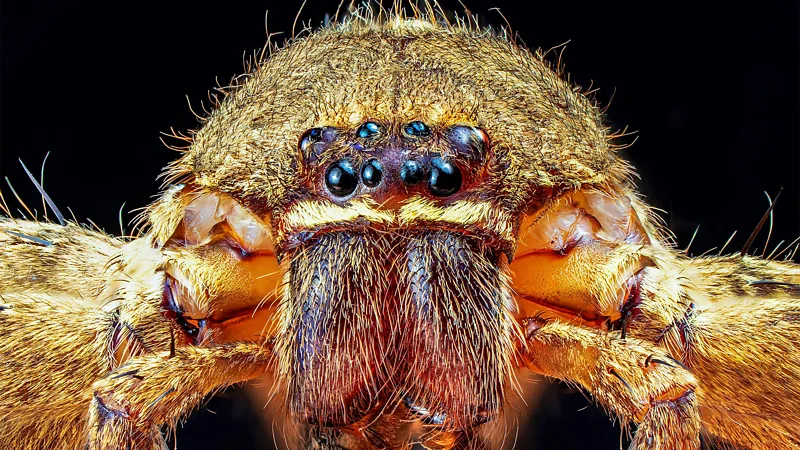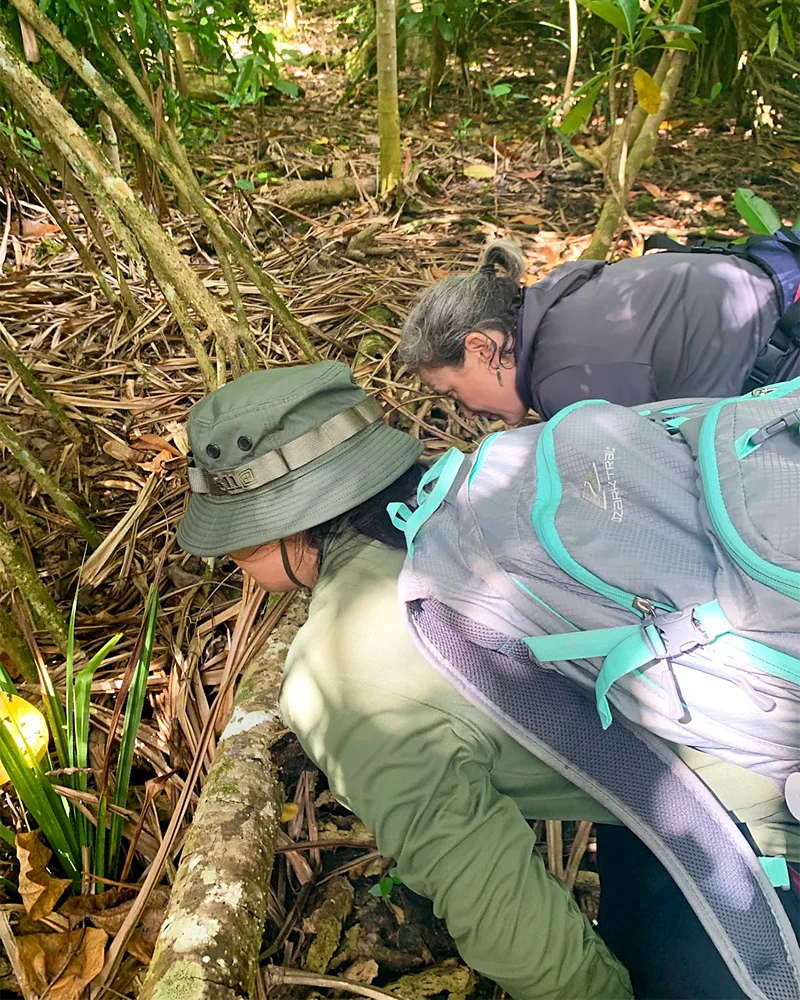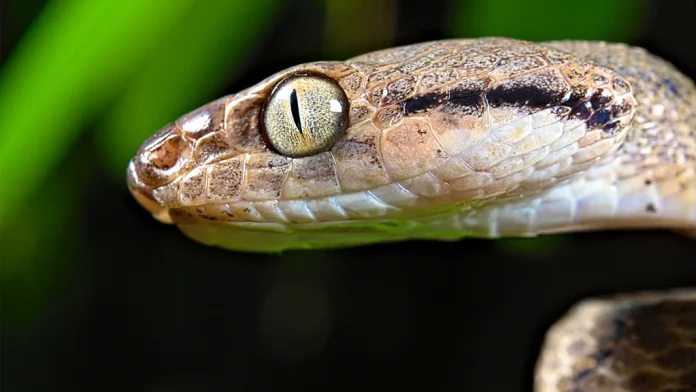Spider and Snake Showdown: How Invasive Brown Tree Snakes are Redefining Guam’s Ecosystem
In the remote forests of Guam, a fierce ecological battle is unfolding that pits alien predators against native species, sparking an imbalance that has yet to reach a resolution. The island has become a vivid example of what can happen when invasive species are introduced into ecosystems that have evolved in isolation. The culprit here is the brown tree snake, an invasive reptile with an insatiable appetite that has driven nearly every bird species on Guam to extinction.
And with birds no longer present to regulate other parts of the food web, the island has become a paradise for spiders, with 40 times more of these eight-legged creatures than neighboring islands. Scientists now call Guam a “web of webs,” and this ecological anomaly raises questions about what the future holds for an island where the natural balance has been so profoundly altered.
The first signs of trouble started decades ago when the brown tree snake, believed to have arrived on the island by ship after World War II, started quietly establishing itself. Haldre Rogers, an associate professor of fish and wildlife conservation at Virginia Tech, recalls attending a party on the island and witnessing a brown tree snake brazenly coiling around the remains of a roast pig, devouring chunks of meat in plain view of guests. It was an ominous sign of the devastation that had already occurred in Guam’s jungles, where 10 out of 12 native bird species had been wiped out by the snake, leaving only two species barely clinging to survival in hard-to-reach caves and urban zones.
The implications of the brown tree snake’s presence go far beyond Guam’s silent, birdless forests. With birds now missing from the ecosystem, spiders have exploded in number, filling the gap left behind by predators who would normally keep them in check. Guam’s forests now look like a scene out of a horror movie, tangled with webs of all kinds, from giant banana spiders with webs stretching from the ground to the canopy, to massive “condo webs” hosting tens of smaller spiders who rely on the protection and prey opportunities such structures afford.
In neighboring Northern Mariana Islands like Rota, Tinian, and Saipan, there is a seasonal spike in spider populations. In Guam, however, spiders are a year-round constant, covering the forests in a permanent, silvery haze.

Scientists who study this phenomenon have to adjust to the environment’s physical and mental challenges. Navigating Guam’s unique limestone forests, where plants root directly into rugged coral reefs that create a landscape of sharp karst, can be treacherous. Rogers notes that new field technicians must get their “karst legs” as they adapt to walking on the uneven, jagged ground.
Despite these challenges, Rogers and her team conducted detailed surveys to determine just how many spiders now inhabit Guam’s jungles. Their findings revealed that during the rainy season, Guam has 40 times more spiders than its neighboring islands, and 2.3 times more during the dry season. The absence of birds has led to this arachnid surge and the creation of webs covering every forest gap, sometimes spanning areas the size of rooms. The sight of these webs, glistening under the tropical sun, is a stark reminder of the island’s altered ecosystem.
The brown tree snake’s insatiable appetite has not only affected birds but has thrown the entire ecosystem into chaos. Scientists monitoring fledgling starlings, one of the few remaining bird species on the island, have found their radio trackers in the bellies of these snakes. But even more disturbingly, many young birds are simply killed and left uneaten by the snakes, covered in snake saliva in what researchers grimly refer to as “sliming.” These snakes are highly adaptable hunters and have developed behaviors like “lasso climbing,” where they wrap themselves around smooth poles meant to keep them out of bird nests, showcasing a level of skill and persistence that has baffled scientists.
Efforts to control the snake population, such as poisoning them with acetaminophen-laced bait, have had limited success and have proven incredibly costly, with the U.S. government spending $3.8 million annually on control efforts. Attempts to develop biological control methods, like introducing viruses specific to the snakes, have also been explored but remain in the experimental phase. So far, these efforts have yielded only small victories, such as establishing snake-free zones in parts of Andersen Air Force Base, protected by fences and ongoing maintenance.

The absence of birds on Guam has more profound ecological consequences than just the spider population boom. Many of Guam’s native trees rely on birds to disperse their seeds, and without them, the forest is slowly dying. Tree seeds that once would have been carried across the forest now fall to the ground near the parent tree, where they are often unable to grow in the shaded environment or simply rot. This issue has left the forests filled with “gaps” where fallen trees once spurred competitive growth and regeneration. Now, these gaps remain empty, a sign of the forest’s gradual decline.
Studies have shown that islands without certain predator species, such as birds or lizards, often see explosive growth in the prey species they would have hunted. In the Bahamas, for example, islands without lizards have 10 times the number of spiders compared to those with these reptilian predators. In Guam, where birds are missing entirely, spiders have achieved a dominance unheard of in other environments, forever altering the jungle ecosystem.
The brown tree snake’s invasion of Guam provides an unsettling example of what happens when invasive species disrupt an isolated ecosystem that evolved without natural defenses against such threats. Today, the snake population on the island is estimated in the millions, with no end to their dominance in sight. Their ability to devour animals up to 70% of their own body weight has cemented their place as the top predator on the island, giving rise to a new kind of wilderness, one without the sounds of birds and instead ruled by a silent menace slithering through the trees.
Conservationists and ecologists are racing against time to find solutions to protect Guam’s few remaining native species and restore some balance to the island’s ecosystems. However, completely eradicating the brown tree snake is a near-impossible task, and current measures have largely been stopgaps to prevent further spread rather than complete control. Efforts to preserve species like the Guam rail, known as the Ko’ko’ in Chamorro, and the Guam kingfisher have led to reintroduction programs on nearby islands, where they can live without the threat of the brown tree snake.
In one controlled experiment, the use of paracetamol bait has shown promise in containing the snakes within limited areas, such as military bases. However, the logistics and cost of deploying this method across Guam’s dense forests make it an unlikely large-scale solution. Some scientists have proposed introducing predators of the brown tree snake, but concerns about unintended consequences for Guam’s ecosystem have made this a contentious option.

Guam stands as an ecological experiment in the unintended consequences of species introduction. As spiders continue to fill the gaps left by bird populations, the forest may undergo even more fundamental changes in structure and composition. Researchers note that without birds to disperse seeds, the forest will struggle to regenerate naturally, leading to an inevitable decline in tree diversity and density over time. While conservationists continue to search for solutions, the lack of immediate options suggests that Guam’s forests may continue down this altered path, shaped by the relentless influence of a single invasive species.
The story of Guam’s brown tree snake is a cautionary tale about the impacts of invasive species and the delicate balance of isolated ecosystems. For now, the island’s forest floors and canopies are silent, save for the rustle of spider webs and the quiet slither of snakes moving through the undergrowth. As this strange ecological experiment unfolds, Guam has become a testament to the far-reaching consequences of introducing a single predator to a vulnerable ecosystem, an imbalance that may last for generations.
The snakes’ grip on Guam remains firm, and unless a breakthrough in ecological management is achieved, the island may continue to exist as an eerie habitat where birds no longer sing, and spiders thrive under a canopy of silence.




